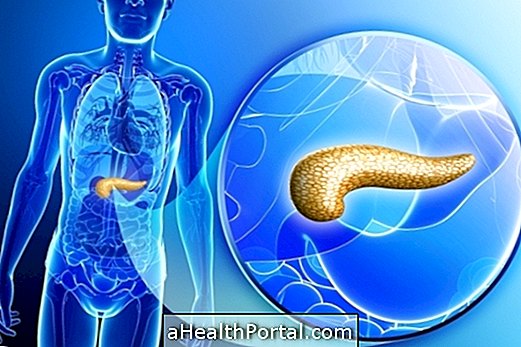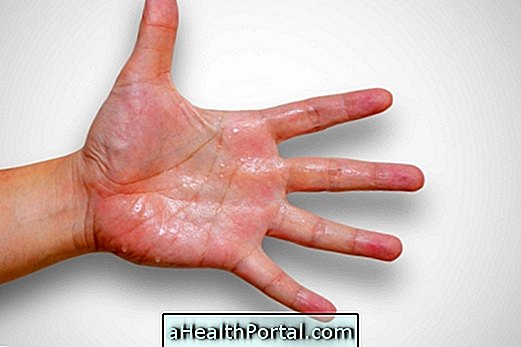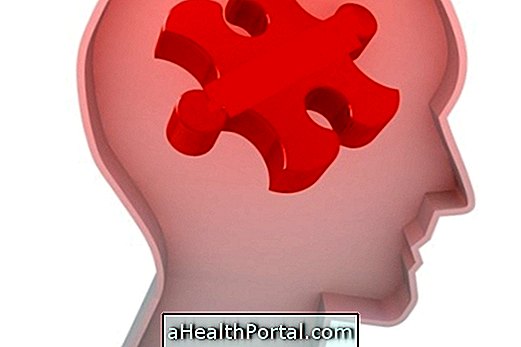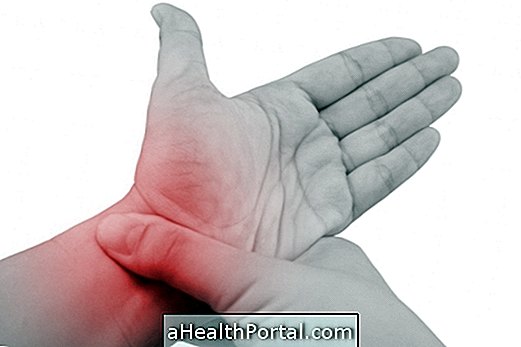The pancreas is a small gland that is located behind the stomach and is responsible for the production of enzymes that participate in the digestive process and hormones, such as insulin and glucagon, which promotes blood sugar control.
This gland is fundamental for the proper functioning of the organism, however, due to some situations, such as unhealthy living habits or obstruction of the bile ducts, for example, this organ can undergo changes in its functioning, resulting in diseases that may have serious consequences if the person is not identified and treated quickly.

The main diseases related to the pancreas are:
1. Pancreatitis
Pancreatitis refers to inflammation of the pancreas that can occur due to excessive consumption of alcoholic beverages, obstruction of the bile ducts and cystic fibrosis, for example, which causes the digestive enzymes produced by the pancreas to be activated before reaching the intestine, causing inflammation in the organ.
According to the severity and evolution of inflammation, pancreatitis can be classified as:
- Acute pancreatitis, whose symptoms suddenly appear but can be easily controlled when treatment is started rapidly and followed by the physician's advice;
- Chronic pancreatitis, whose symptoms appear over the years and may be the result of constant consumption of alcoholic beverages or the evolution of acute pancreatitis.
Main symptoms: Inflammation in the pancreas can be noticed through some symptoms such as abdominal pain, nausea, vomiting, diarrhea, bloating, weight loss without an apparent cause, fever and the presence of yellowish and fatty stools. Get to know other symptoms of pancreatitis.
How to treat: Treatment should be done according to the doctor's recommendation and depends on the severity of the symptoms. In the case of acute pancreatitis, it is important that treatment be started as soon as possible to avoid progression to chronic pancreatitis, for example.
Usually the treatment is done in a hospital environment, so that the person is constantly monitored, being controlled diet, hydration and use of analgesic and anti-inflammatory drugs, such as Dipirone and Ibuprofen, for example. If there is a risk of infection, your doctor may recommend the use of antibiotics. Understand more about the treatment for pancreatitis.
In the case of chronic pancreatitis, the treatment is done with the aim of avoiding complications, being usually indicated by the doctor the supplementation of pancreatic enzymes, as well as the use of analgesic drugs, such as Dipirone or Paracetamol. Check out some tips on pancreatitis in this video:

2. Pancreatic cancer
Pancreatic cancer is a type of tumor that presents high chances of metastasis and that seriously compromises the life of the person, since it is usually only identified in more advanced stages. This type of cancer is most common in people between 60 and 70 years old, but it can also happen in people with a family history who have had pancreatitis, who consistently consume alcoholic beverages, smoke and consume very fatty foods.
Symptoms of pancreatic cancer usually appear when the disease is already advanced, dark urine, whitish or fatty stools, yellowing of the skin and eyes, abdominal pain, poor appetite, weight loss, frequent nausea and vomiting.
If the symptoms do not go away in 1 week, it is important to go to the general practitioner or gastroenterologist for tests that can complete the diagnosis for pancreatic cancer and thus start treatment immediately.
How to treat: The treatment for cancer of the pancreas aims to avoid metastasis and improve the quality of life of the person, since it has no cure. The treatment established by the doctor is usually surgery followed by chemo and radiotherapy. In addition, it is important that the person adopt healthier lifestyle habits and be accompanied by the doctor on a regular basis. Learn more about treatment for pancreatic cancer.
3. Pancreatic insufficiency
Pancreatic insufficiency is characterized by the almost complete reduction of the production of enzymes by the pancreas, and may be due to chronic alcoholism, smoking, genetic diseases and surgery, for example.
Main symptoms: The symptoms of pancreatic insufficiency usually appear in later stages of the disease, when the concentration of enzymes is already much lower. The main symptoms are poor digestion, abdominal pain, presence of fat in the stool, weight loss and diarrhea. In addition, there may be anemia and malnutrition due to loss of nutrients and alteration in the digestion process due to lack of enzymes.
How to treat: The treatment of pancreatic insufficiency is mainly done with the enzymatic replacement, thus helping the body to absorb nutrients and avoid malnutrition and anemia. In addition, vitamin and mineral supplements, as well as pain relieving medicines, may be recommended.
4. Diabetes
Type 1 diabetes is more common in children and is characterized by increased blood glucose concentration due to dysfunction in the pancreas, which fails to produce ideal amounts of insulin, which is the hormone responsible for lowering glucose levels.
Main symptoms: Type 1 diabetes can be identified through increased toilette, increased thirst and hunger, weight loss without apparent cause, too much sleep and tiredness, sudden mood swings and a greater chance of acquiring infections.
How to treat: Treatment for diabetes is mainly done with food control, physical activity and, in the case of adults, the endocrinologist may recommend the use of some medicines that may lower blood sugar concentrations, such as Metformin, for example, and thus decrease the symptoms of diabetes and improve the quality of life.

How to avoid
Pancreatic diseases can be prevented through healthy habits such as avoiding alcohol and smoking, regular physical activity, and a healthy and balanced diet. In addition, it is important to have control of the amount of glucose in the urine and blood, as well as the control of blood pressure.
If any change in the body or any symptoms that may represent a problem in the pancreas is noticed, it is important to go to the doctor to have the diagnosis and start the treatment.

























